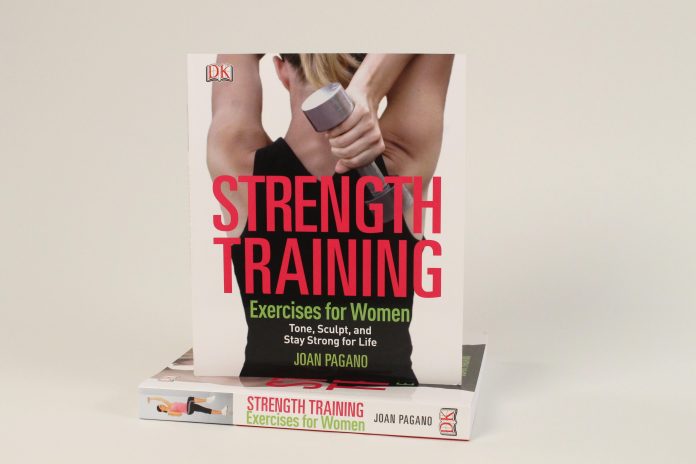In the realm of fitness, where the pursuit of strength often takes center stage, there lies an unsung hero quietly fortifying our bodies against the unseen threats of injury. Imagine a world where each squat, lunge, and lift not only sculpts the physique but also weaves an invisible armor around joints, tendons, and muscles. This is the world of strength training for injury prevention—a strategic dance of resistance and resilience. As we delve into the art and science of these exercises, we uncover how they serve as the foundation of a robust and enduring physicality, empowering us to not only reach new heights in performance but also safeguard our bodies against the wear and tear of life’s relentless demands.
Understanding the Role of Strength Training in Injury Prevention
Incorporating strength training into your fitness routine offers numerous benefits beyond building muscle and improving performance. One of its most significant advantages is its role in injury prevention. By enhancing the strength of muscles, tendons, and ligaments, strength training creates a robust support system for your joints and bones. This increased resilience helps to withstand the physical demands of daily activities and sports, reducing the likelihood of strains, sprains, and other common injuries.
Strength training exercises, when done correctly, also improve balance and coordination, which are crucial for maintaining stability and preventing falls. Key exercises that contribute to injury prevention include:
- Squats: Enhance lower body strength and stability.
- Deadlifts: Fortify the posterior chain, protecting the back and improving posture.
- Lunges: Promote leg strength and balance.
- Planks: Strengthen core muscles, essential for overall stability and support.
- Push-ups: Build upper body strength, aiding in shoulder and arm stability.
By integrating these exercises into your routine, you not only build strength but also equip your body to better handle the stresses that could lead to injuries.
Key Exercises to Fortify Joints and Muscles
Incorporating specific exercises into your routine can significantly enhance joint stability and muscle resilience, reducing the risk of injuries. A well-rounded regimen includes a variety of movements targeting different muscle groups and joints. Planks are an excellent choice for building core strength, which supports the spine and helps maintain balance. To further bolster your lower body, consider adding lunges and squats to your workout, as these exercises engage the hips, knees, and ankles, promoting flexibility and strength.
For upper body stability, push-ups are a classic exercise that fortifies the shoulders, chest, and triceps. Additionally, incorporating rowing exercises can strengthen the back muscles and improve posture, thereby preventing injuries caused by poor alignment. Don’t forget to include dynamic stretches such as arm circles and leg swings to warm up the joints and muscles before diving into more intense activities. This comprehensive approach ensures that your body is well-prepared to handle physical demands, minimizing the likelihood of strain or injury.

Tailoring Your Strength Routine to Minimize Injury Risks
Incorporating a well-rounded strength routine is essential for maintaining overall fitness and minimizing injury risks. To achieve this, consider focusing on functional movements that mimic everyday activities. This approach not only enhances strength but also improves coordination and balance, providing a robust foundation for injury prevention. Key exercises include:
- Squats: Strengthen the lower body while promoting flexibility and stability.
- Deadlifts: Engage multiple muscle groups, enhancing core strength and posture.
- Push-ups: Develop upper body strength and improve shoulder stability.
- Planks: Fortify the core, supporting the spine and reducing back strain.
- Lunges: Enhance leg strength and balance, reducing the risk of falls.
Beyond the exercises themselves, integrating progressive overload into your routine is crucial. Gradually increasing the weight or resistance ensures continuous improvement without overstraining muscles and joints. Equally important is prioritizing proper form and technique, as this minimizes undue stress on your body. Lastly, incorporating rest days into your routine allows for muscle recovery and repair, which is vital for preventing overuse injuries. By tailoring your strength training with these strategies, you create a sustainable practice that supports both fitness goals and long-term health.

Expert Tips for Safe and Effective Strength Workouts
To ensure your strength training routine is both safe and effective, it’s essential to incorporate a few expert-recommended practices. Warm up properly before diving into your workout; this could include light cardio or dynamic stretching to prepare your muscles and joints. Start with lighter weights and gradually increase as your strength improves to avoid overexertion. It’s also crucial to maintain proper form throughout each exercise, as this not only maximizes effectiveness but also significantly reduces the risk of injury.
- Listen to your body: If you experience any pain, stop and reassess your form or take a break.
- Incorporate rest days: Allow your muscles time to recover and grow stronger.
- Stay hydrated: Keeping your body well-hydrated supports muscle function and recovery.
- Seek professional guidance: Consider working with a certified trainer to tailor a program specific to your needs and goals.
In Summary
As we conclude our exploration into the realm of strength training for injury prevention, it becomes clear that the journey is as vital as the destination. Each lift, stretch, and stance is a step towards a more resilient body, a testament to our commitment to safeguarding our physical well-being. By integrating these exercises into our routines, we are not only fortifying our muscles but also nurturing a deeper connection with our bodies, understanding their limits, and celebrating their capabilities. Remember, the essence of strength training is not just in the physical transformation but in the empowerment that comes with knowing we are actively investing in our longevity and vitality. As you embark on or continue this path, let each session be a reminder of your strength, potential, and the unwavering resolve to live a life unburdened by preventable injuries. Here’s to a future of strength, stability, and boundless movement.


































